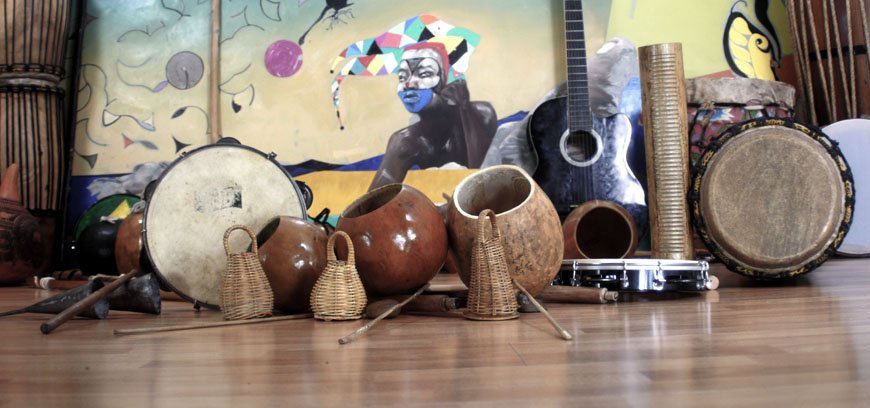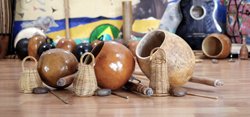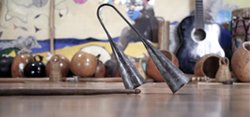-
Music in Capoeira

Music is fundamentally integral to the art of Capoeira. Rich in history, tradition and influence Capoeira music affects the style and speed of the game that is played. There are three major instruments that are regularly played: the berimbau, the atabaque and the pandeiro.
Depending on the rhythm and speed these instruments play, the Capoeiristas will adapt and change their style of play and strategy. Capoeira music directly affects whether a game is fast or slow, passive or aggressive,low to the ground, or flying through the air. Just as Capoeira itself has evolved throughout its history, so has Capoeira music. The berimbau is the head instrument; all other instruments follow as the berimbau changes in speed or rhythm.
Apart from dictating the style of the game, Capoeira music plays other important roles as well. Music is the greatest contributor to the ax�, or energy, of the game. The soloist and chorus provide a constant rhythmic background to those playing the game of Capoeira, providing energy and encouragement. The lyrics of Capoeira music often tell stories about famous mestres, lessons to be learned playing the game, historical figures, or events important to the art. The words can even speak directly to the players in the game that is going on, giving insight or instruction.
There are five main instruments used in capoeira: berimbau, pandeiro, atabaque, agogô, and reco-reco. The types of instruments used to form the bateria depend on the style of capoeira
Rodas of capoeira angola typically use three berimbaus (a gunga, médio, and viola), one or two pandeiros, an atabaque, agogô, and reco-reco.
Rodas of Mestre Bimba’s traditional capoeira regional use one berimbau and two pandeiros.
Rodas of capoeira contemporânea are in between, typically using more instruments than Bimba’s regional, but fewer than capoeira angola.




